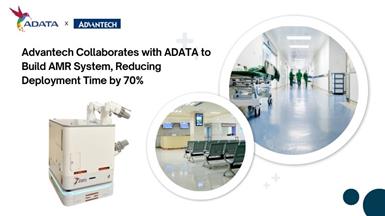The Increasing Need of Distributed Energy Resource Management Systems
28/10/2022
How OT-IT Convergence and AI can Positively Impact on the Renewable Energy Market?
The electricity generation and transmission industry is at the start of a period of great challenge, and great change.
Demand is set to rise exponentially, driven by a move to electric vehicles, and a move away from fossil fuel based heating and hot water systems in both domestic and commercial properties. Whilst traditional generation will have a part to play in providing base load for the foreseeable future, it is widely accepted that the projected increase in capacity cannot and should not be met by adding more traditional power stations.
There are several reasons for this:
- Traditional power stations are extremely expensive to build, take a long time to bring into service, and are very unpopular with the local residents living in their vicinity.
- Burning fossil fuels is driving global warming, is having a serious detrimental effect on climate patterns, and has to be significantly reduced, evidenced by initiatives such as the EU’s Green Deal, which aims to cut 55% of CO2 emissions by 2030 and to be carbon neutral by 2050.
- High voltage transmission grids do not currently have the capacity to transport and distribute the forecast load across long distances.
Instead of basing future generation on a small number of additional large, traditional power stations, the industry is therefore shifting towards a much more decentralized model of local generation and distribution. This is based upon a large number of smaller, geographically distributed generation sites, with the focus on those driven by renewable energy sources.
This new model brings some new challenges to those the industry has historically had to address:
- Renewable energy sources have, by their very nature, a capacity that is neither fixed, nor entirely predictable. Solar plant outputs are dependent on both the strength of sunlight on any given day and the number of daylight hours, which varies between seasons. Wind power capacity depends upon wind strength, which again varies on a daily, if not hourly, basis.
- Both the voltage and frequency of the supply to customers has to be controlled within tight limits, irrespective of the load drawn, or the rate at which this changes. The more generation sites that feed into the grid, the more complex the problem of managing supply voltage and frequency becomes.
- A decentralized generation model, with a large number of disparate energy sources, requires much more sophisticated real-time monitoring and control than is the case when generation is based around a single process and site.
- The smaller scale generation locations are built and operated by a variety of owners, resulting in a large variation in the equipment used, and therefore requiring a high level of versatility in the data ingress systems.
The first two of these issues will largely be addressed by the adoption of local storage solutions, meaning the focus is on filling the storage flexibly when the energy is available to balance load, rather than switching additional generation sites on and off to match demand. This is driving the need for high capacity battery solutions, adding to the demand already placed by the migration to electric vehicles. There is some synergy here however, with a number of EV manufacturers already adopting a bi-directional (V2H) charging architecture. Here, the vehicle can also act as a power source for the owner’s house, allowing, for example, the customer to take advantage of cheaper overnight or utility-switchable charging tariffs whilst also reducing the overall load demand variability on the supply grid, which benefits the power utility.
The third & fourth challenges are being addressed by a new generation of control software, known as a Distributed Energy Resource Management System, or DERMS for short, coupled to on-site gateways able to interface to a diverse range of local equipment, and present the recovered data in a unified and consolidated format to the upstream systems. These gateways are in turn interfaced to an intermediate layer which takes care of the complexities involved in managing, maintaining and operating a large estate of geographically distributed gateways, and which presents a curated and validated data lake of the ingested data to the DERMS. When combined, these systems take real time information from a large number of diverse technology, geographically distributed generation and storage assets, and monitor, control and aggregate their outputs to essentially provide a virtual power station to a utility company. This brings with it the added advantage that its endpoints are already geographically widespread, reducing the need for new high voltage backbone transmission systems to move the electricity to the customers.
Of course, these new solutions also need new technologies to be introduced to allow cost effective operation. Lithium-ion battery capacity for storage solutions, forecast in Europe to rise from 62 GWH in 2021 to 664 GWh by 2030 is driving the creation of new giga-factories that will be heavily dependent upon high performance machine vision and Edge-AI systems, both to create the machines used in production, and to automate the inspection and quality control processes.
Edge-AI will also find its way into the gateways used within the DERMS systems, to reduce the traffic sent to and from the site, improve overall system responsiveness, and to proactively detect conditions that may be precursors of performance degradation or failure, enabling intervention to take place before there is a serious impact on generation capacity.
There is no doubt that power utilities are at the start of a significant period of transformation. Fortunately, this coincides with a time where technological advances in connectivity, OT-IT convergence and AI have reached a level of maturity and cost effectiveness that will have a significant positive impact on the journey.



-25/ECU-150_01--_P_V2-(1)20230904170548.png)
-25/UNO-2271G-V220240124140441.png)
/EKI-5629CI-MB_S20161017134018.png)
